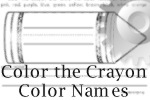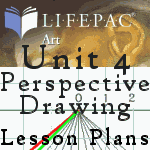A Lab Report Sample
Fizzy Callsighence Aug. 31, 2001
Title: Atoms & Molecules Experiment 1.1
Purpose: How are atoms and molecules related to one another?
Introduction: Atoms and molecules make up everything that surrounds us (including us!). Although atoms and molecules are too small to see individually, we can distinguish atoms and molecules by examining the substances that they make as well as how those substances change.
Hypothesis: If atoms and molecules make up all substances, then substances can be broken down into separate molecules and atoms.
Supplies: small glass, baking soda, tap water, 9-volt battery, two 9-inch pieces of insulated wire, scissors, electrical tape
Procedure:
Filled the glass full of tap water. Added a teaspoon of baking soda and stirred vigorously. Saw tiny bubbles in the swirling water. Stripped the insulation of the ends of each wire, about half an inch. Laid one end of one wire to the positive terminal of the battery and secured it with tape. Laid one end of the other wire to the negative terminal of the battery and secured it with tape. Didnt let the two loose ends of the wires touch! Put the two bare ends into the glass of baking soda/water solution. Immediately observed and recorded what I saw. Set the timer for 10 minutes. Removed the wires from the baking soda/water solution. Observed and recorded the + and ends of the wires in the table below.
Observations and Data:
When baking soda was added to clear water, solution appeared cloudy white, then clear again as it dissolved. Water was still and without bubbles before wires were immersed.
| Ends of wires in solution |
Ends of wires in solution after 10 minutes |
|
| + |
Bubbles formed immediately |
Bubbles continue; end of copper wire turns blue-green color |
| -- |
No bubbles; resecured tape and bubbles formed |
Bubbles continue; end of copper wire looks the same as at the beginning (orange brown) |
(Remember to write up your Conclusion on a new page!)
Conclusion:
This lab investigated how atoms and molecules are related to one another, since everything is made up of atoms and molecules. In order to study this relationship, we used the batterys electrical energy to break down the molecules of water into their separate atoms: hydrogen and oxygen two gases. These gases caused the bubbles I observed. I then observed that the hydrogen and oxygen atoms had interacted and linked with the copper atoms from the wire and the carbon atoms from the baking soda to form a blue-green molecule, a substance which I learned was called copper hydroxycarbonate.
My results showed that not only can molecules break down into atoms, but also different atoms can link together to form new molecules, thus proving my hypothesis was correct. I believe the results are accurate because a change in state of matter (liquid to gas) as well as a new substance of a different color was made from the original combination of atoms. In order to further investigate this problem, next time I would like to use the same baking soda/water solution and see what molecules would form using different metals such as gold, silver, or nickel. I believe the breaking down of molecules and linking of the atoms from these metals would form other substances.


 New Yellow Stripe handwriting rule papers in 5 rule heights and in horizontal format.
New Yellow Stripe handwriting rule papers in 5 rule heights and in horizontal format. Drawing with Children
Drawing with Children Color Names: Tracing, Coloring, Writing
Color Names: Tracing, Coloring, Writing


